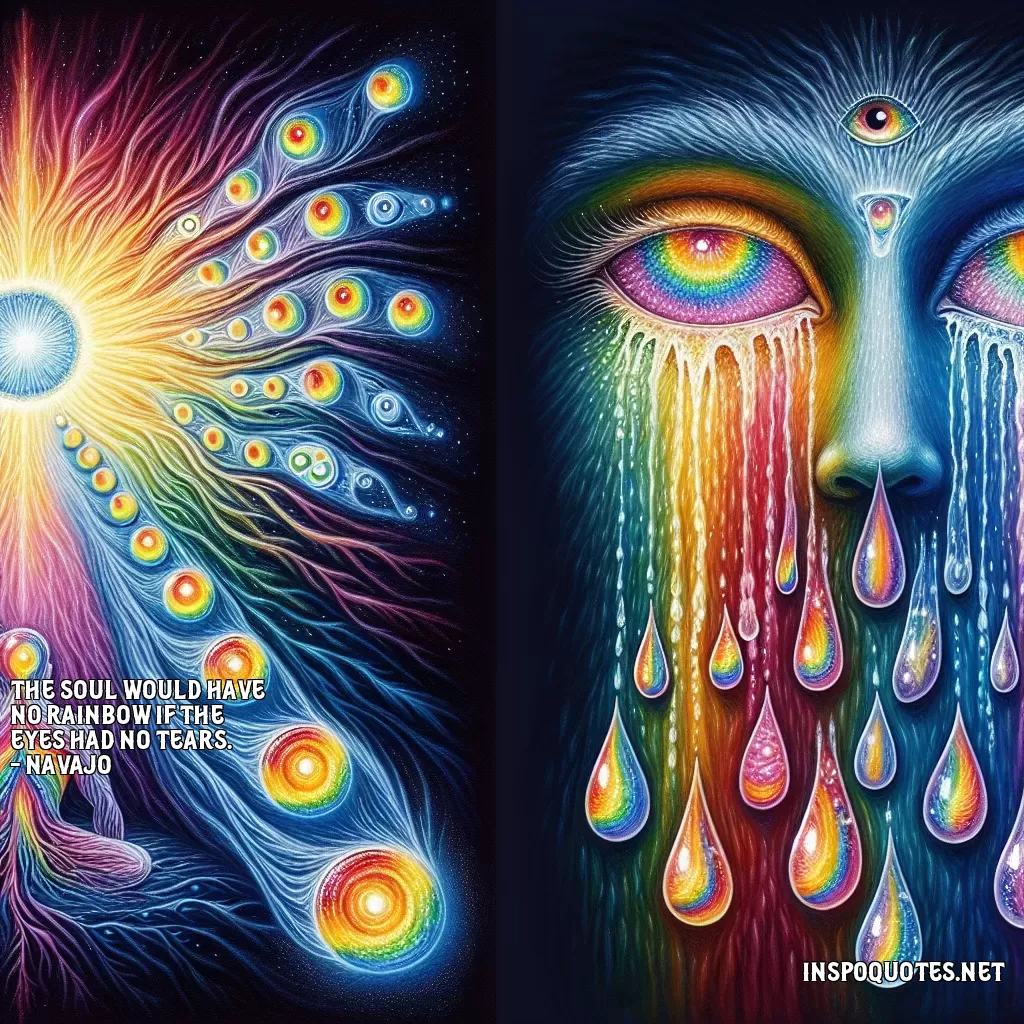
The soul would have no rainbow if the eyes had no tears. - Navajo
Author: Navajo
👁️ 17 views
This quote, "The soul would have no rainbow if the eyes had no tears," speaks to the profound wisdom found in experiencing a range of emotions, particularly pain and sorrow, to truly appreciate the depth and beauty of life. Derived from Navajo culture, this metaphor suggests that just as a rainbow requires rain to form, the soul's growth and enrichment transpire through challenges and tears. The rainbow symbolizes beauty, hope, and promise, arising from the storm. Similarly, tears represent emotional cleansing, the natural response to sorrow, loss, or struggle. Through tears, individuals process their experiences, finding meaning and emerging stronger and more resilient. Thus, the contrast between storm and rainbow parallels the emotional journey from despair to enlightenment. By confronting and embracing difficult emotions, the soul undergoes transformation. These experiences can foster empathy, wisdom, and inner strength. Pain and joy are integral parts of the human condition, and the ability to fully experience one enhances the other. The quote encourages acceptance of pain as a crucial component of life, promoting healing and personal development. On a broader scale, this wisdom suggests that without adversity, humans might not fully grasp the beauty and joy life offers. By acknowledging and expressing emotions, individuals cultivate a richer, more vibrant soul, much like rain creates rainbows. Thus, tears, far from being mere vessels of sadness, become vital contributors to the soul's vibrancy and depth.
Quote By: Navajo
Navajo, also known as the Diné, are a Native American people whose rich history, culture, and language have made them one of the largest tribes in the United States. Author and historian, Larry M. Logue, highlights their ancestral roots tracing back to the Southwestern United States, primarily Arizona, New Mexico, and Utah. The Navajo people's origins are deeply intertwined with the land, as their creation stories often depict a journey through various worlds before settling in the present one.
Historically, Navajo society was centered around a pastoral lifestyle, with a strong emphasis on weaving and pottery, both of which are integral to their cultural identity. According to Logue, the Navajo are renowned for their craftsmanship, particularly in the art of weaving intricate rugs and blankets that reflect their spiritual beliefs and connection to the earth. The vibrant colors and patterns often tell stories and hold significant cultural meanings, showcasing the skill and creativity that have been passed down through generations.
Throughout the 19th and 20th centuries, the Navajo faced tremendous challenges, including forced relocation during the Long Walk of 1864, when thousands were marched to the Bosque Redondo in a tragic episode of American history. Despite these adversities, the resilience of the Navajo people shines through. Author and anthropologist, Barbara A. Cameron, notes that the community has maintained a strong sense of identity and pride, fostering their traditions even in the face of assimilation pressures.
Today, the Navajo Nation is the largest tribal nation in the United States, with a government, schools, and various enterprises contributing to its economy. Larry M. Logue emphasizes the importance of preserving the Navajo language, which is vital for cultural continuity and identity. Efforts are underway to teach the language in schools and through community programs, ensuring that future generations of Navajo can connect with their heritage.
In conclusion, the Navajo people embody a spirit of resilience, creativity, and cultural richness that continues to thrive today. As noted by authors like Larry M. Logue, their ongoing journey reflects not just survival, but a flourishing community deeply connected to its history, traditions, and land.